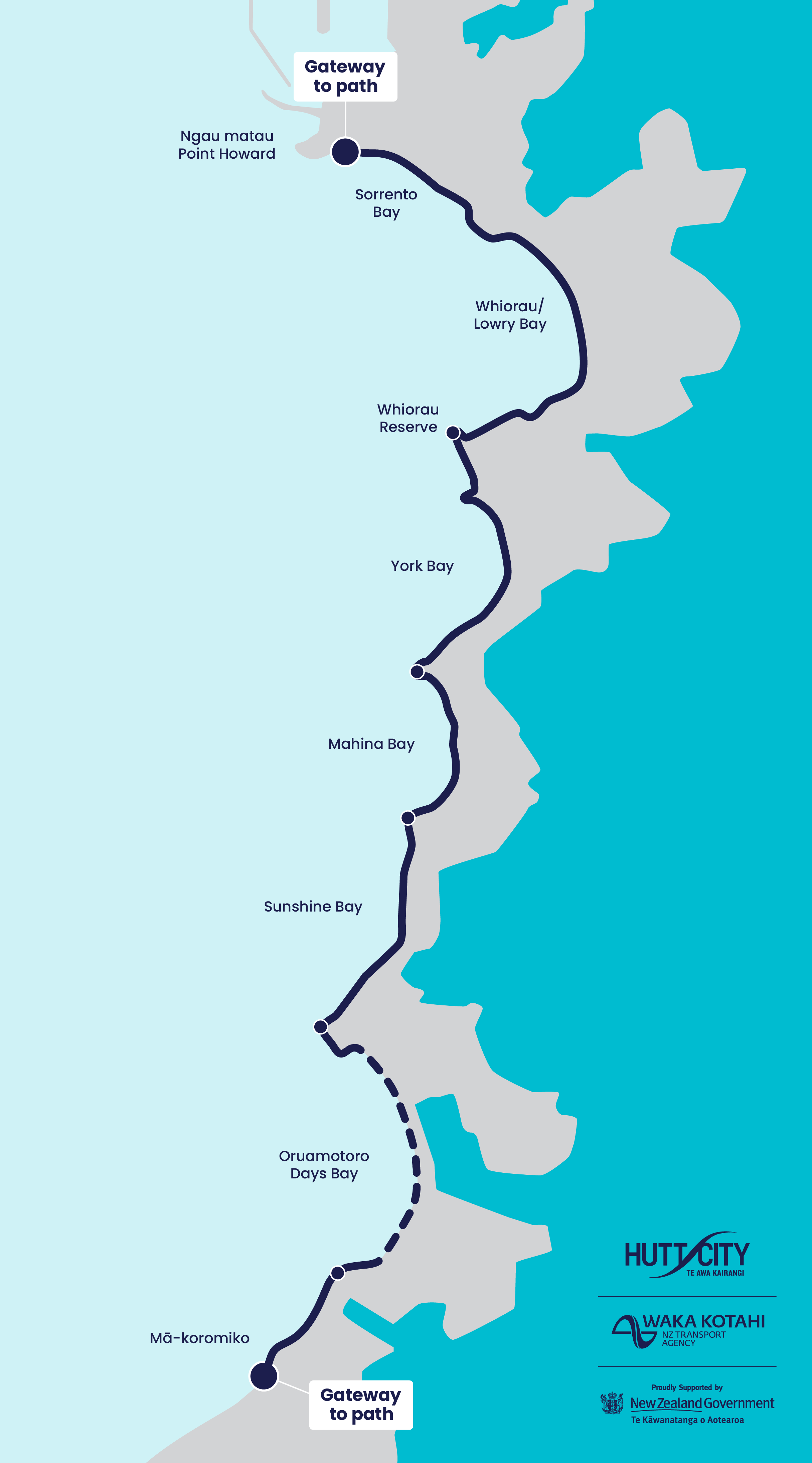About Tupua Horo Nuku
The name Tupua Horo Nuku evokes the narrative of the Tupua (spiritual phenomena) called Ngake, one of the two creators of Wellington Harbour in traditional Māori narrative. The name was gifted to the project by Te Atiawa Taranaki Whānui, as part of the partnership between iwi and Hutt City Council.
This partnership operates through the Mana Whenua Steering Group, which involves iwi mana whenua – Taranaki Whānui ki te Upoko o te Ika, and Ngāti Toa Rangatira – and Hutt City Council.
The project will be delivered on behalf of Hutt City Council by Te Ara Tupua Alliance.
This is a project delivery team made up of:
- Waka Kotahi,
- Downer NZ,
- HEB Construction,
- Tonkin+Taylor.
Te Ara Tupua Alliance is also delivering the Ngā Ūranga ki Pito-One (Ngauranga to Petone) shared path.
Video description: A birds-eye-view of the project, April 2025.
Timeline
| Right now | Construction is progressing well in Whiorau/Lowry Bay. |
|---|---|
| March 2025 | Construction begins in Ngau Matau/Point Howard and Māhina Bay. |
| February 2025 | Tupua Horo Nuku 'Halfway There' community event. |
| January 2025 | Construction begins in Sorrento Bay. |
| December 2024 | Construction completed in Sunshine Bay and York Bay. |
| June 2024 | Construction begins in Whiorau/Lowry Bay and on the Whiorau Bird Protection Area. |
| May 2024 | Design plans for Whiorau/Lowry Bay certified. |
| April 2024 | Construction completed in Mā-koromiko. |
| January 2024 | Construction begins in York Bay. |
| November 2023 | The first section of the shared path is opened at Mā-koromiko. |
| October 2023 | York Bay design plans certified. |
| August 2022 | Te Huringa-Nuku ceremony marks construction start for Tupua Horo Nuku. |
| February 2022 | The name Tupua Horo Nuku is gifted to the pathway by Mana Whenua. |
| November 2021 |
Alliance delivery model chosen, with Te Ara Tupua Alliance confirmed to deliver southern portion (Mā-koromiko and Sunshine Bay). Landscape and Urban Design Plan consultation with residents associations and community groups. |
| October 2021 | Community open day on project next steps. |
| June 2021 | Resource consent appeal resolve (resource consent confirmed). |
| March 2021 | Resource consent initially approved (subsequently appealed). |
| April 2019 | Resource consent application lodged with Greater Wellington Regional Council. |
| 2018 | Design development for resource consent begins. |
| 2015 | Start of community engagement. |
| 2014 | Eastbourne community survey showed that the shared path and climate change were the top concerns facing the Eastbourne community. |





